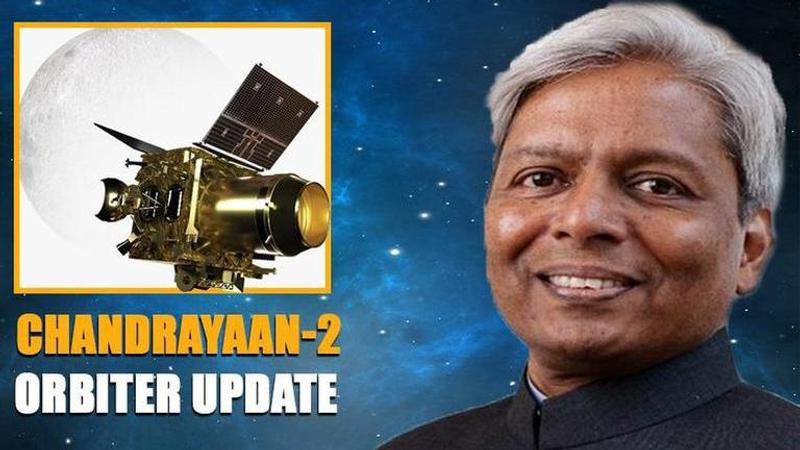Published 19:47 IST, September 7th 2019
Chandrayaan 2 new update out: Orbiter to provide hi-res Moon images
Sharing details of ISRO's Chandrayaan-2, India's Principal Scientific Advisor Professor K. VijayRaghavan on Saturday said how complex the mission was for ISRO

Sharing details of ISRO's Chandrayaan-2, India's Principal Scientific Advisor Professor K. VijayRaghavan on Saturday said how complex the mission was with respect to ISRO's previous missions. He stated that Chandrayaan-2 aimed ar studying different regions of Moon - exosphere, surface and surface in a single mission. Talking about the Orbiter which is currently orbiting the moon, using the highest resolution camera had already been sharing moon pictures, he said. He also shared the details of the images captured by the Orbiter's camera.
Centre shares Chandrayaan-2 update
VijayRaghavan has also shared the features and objective of the Orbiter's camera - Mapping the lunar surface in the panchromatic spectral band (0.5-0.8 microns), high spatial resolution(5m), swathe(20 km from 100 km lunar polar orbit). He also shared that the Orbiter's other payload CLASS measures X-ray Fluorescence (XRF) spectra to detect elements such as Magnesium, Aluminium, Silicon, Calcium, Titanium, Iron, and Sodium as shared by ISRO earlier. Talking about the other payload Imaging Infra-red spectrometer (IIRS) he said that IIRS aimed at the global mineralogical and volatile mapping of the Moon and characterization of water/hydroxyl feature on the moon. He also shared details about the other payloads Chandrayyan Atmospheric compositional explorer 2 (CHACE 2) and Dual-Frequency Radio Science Experiment (DFRS).
ISRO briefs about lessons learnt
Inline with ISRO's statement about Vikram, VijayRaghavan has said that the Vikram Lander followed the planned descent trajectory from its orbit of 35 km to just below 2 km above the surface. All systems and sensors of the Lander functioned excellently until this point as tested, he added. He also stated that 90-95% of the mission objectives had been achieved and will continue to contribute to Lunar science inspite losing communication with the Lander. He also added that ISRO chairman Dr.K Sivan had briefed the mission manangement team and had already addressed the causesa nd learnings from the event. He concluded by lauding ISRO's tremendous efforts.
What is Chandrayaan 2?
Chandrayaan-2's rocket lifted off at the scheduled time of 2:43 PM on July 22. The average distance between the Earth and the Moon is 3, 84, 000 km. Vikram lander was scheduled to land on the Moon on the 48th day of the mission on September 7. This moon-lander and rover mission proves that India is taking lead in space exploration as its mission aimed to investigate the unexplored south pole of the moon. With Chandrayaan-2 India aimed at soft-landing on the Moon. If successful, it would have been the fourth country after the US, Russia, and China to do so. But unfortunately, on September 7, Vikram Lander which had separated from Chandrayaan 2's orbiter on September 2, while descending onto the lunar surface lost contact with ISRO Mission Control Centre. Chandrayaan 2's lunar orbiter is currently revolving around the moon taking high-resolution pictures.
Updated 20:04 IST, September 7th 2019




